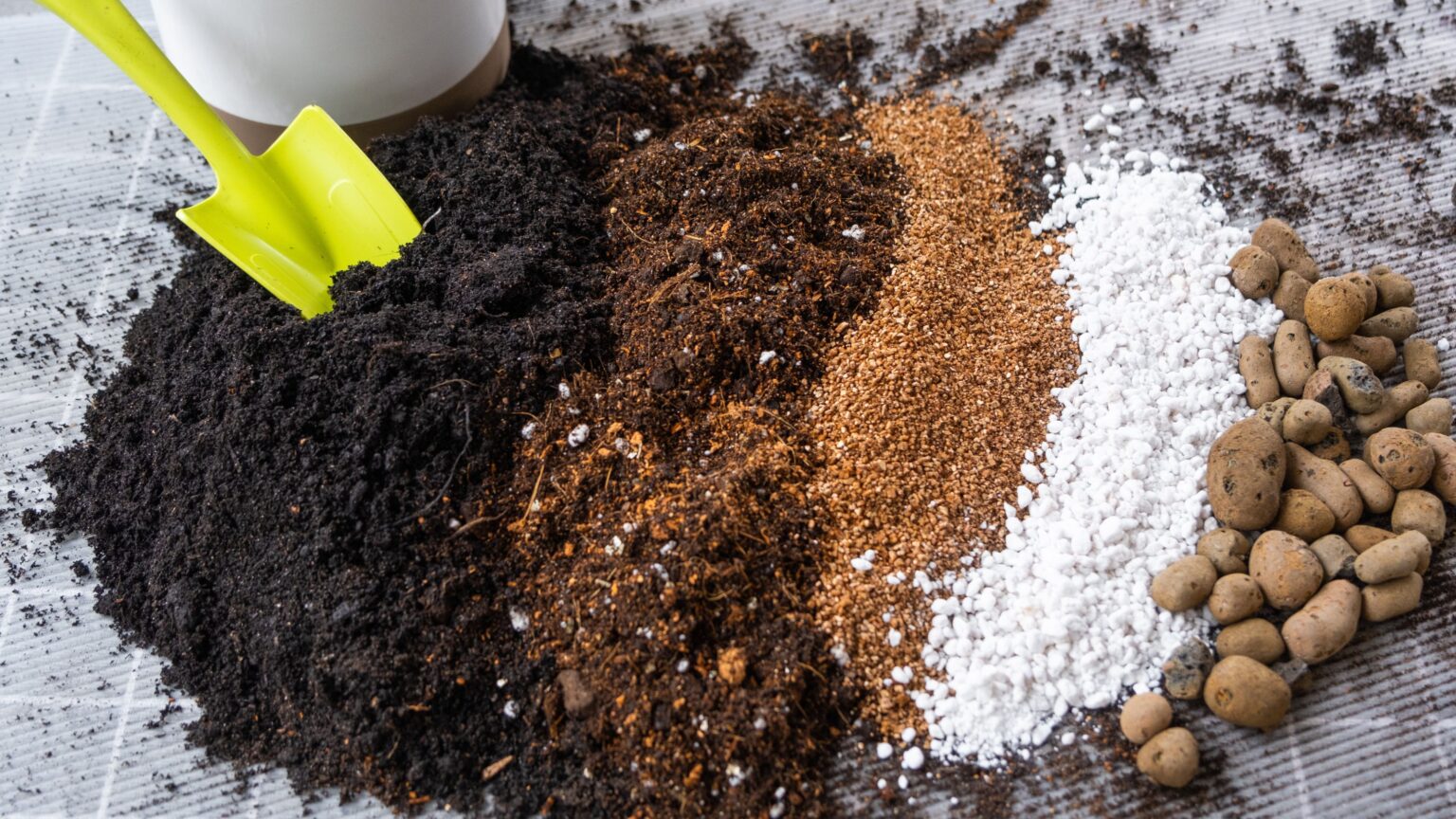If you are planning to sow or pot up any plants this week, then you need to know about perlite and vermiculite. Both play pivotal roles in gardening as soil improvers.
You might already know what perlite is, but vermiculite is also a key player when it comes to sowing and planting fruits, flowers and vegetables. They’re both most commonly used to improve potting soils. But they have slightly different purposes – one improves drainage, while the other is better at retaining water.
But which one do you need to invest in to guarantee healthy plants? This is everything you need to know about the difference between the two materials and how to choose which one your plants need.
What do you use them for?
You mix both perlite and vermiculite with soil, but generally, perlite is used to improve soil drainage, while vermiculite is used to improve water retention.
‘Perlite is a very useful substance for improving drainage in compost, particularly beneficial if you are looking for a sharp medium to produce cuttings, for example,’ says Dickon Harding, gardens and landscape manager at Raby Castle, Park and Gardens.
Its drainage properties make it ideal for drought-tolerant plants like cacti and succulents, which appreciate well-drained soils. It’s a key component of the best soil mix for rosemary in pots, and other Mediterranean herbs, too.
Indoors, if you’re looking for the best soil for monsteras and other houseplants that like light, airy soils, perlite is a go-to choice.
Vermiculite, on the other hand, is used to improve water retention more than drainage (although it can aerate the soil in smaller quantities). It’s better suited to plants that like moisture, or sprinkled over freshly sown seeds and cuttings to retain water and nutrients.
Gardeners often recommend sprinkling vermiculite over the seeds when you’re growing courgettes in pots, for example.
‘Adding vermiculite can improve the texture of sandy soil that may drain too fast and does not retain water very well,’ explains Richard Barker, commercial director at LBS Horticulture.
‘It can also be beneficial for seedling development, as water is readily available to plants when they need it.’
What are they made up off?
Both perlite and vermiculite are naturally occurring minerals (although they’re often produced artificially with high heat), but their composition is slightly different.
‘Perlite is a naturally occurring volcanic rock or glass that was heated to an incredibly high temperature, causing it to expand significantly and ‘pop’,’ explains Rachel Cole, seed manager at Mr Fothergill’s. ‘It then becomes a very lightweight and porous granular medium.
Perlite can be identified by its white, lightweight granules.
‘This rock is easy to handle but feels dusty to the touch before being moistened,’ Rachel adds.
Vermiculite is darker brown or black, flaky, and usually less dusty than perlite.
‘Vermiculite is a naturally occurring mineral that is heated to high temperatures so it expands,’ explains Richard from LBS Horticulture. ‘It is lightweight, non-toxic, has a neutral pH and will not deteriorate over time.’
Where to buy perlite
Westland
Gro-Sure Perlite
Plant !t
Plant !t Perlite
Hardys
Hardys Perlite for Plants
Where to buy vermiculite
Growth Technology
Growth Technology Ltd BetterGrow Vermiculite Soil Additive
Gro-Sure
Gro-Sure Vermiculite, 10 L
Vitax Vermiculite Additive Compost 10l
In a nutshell, perlite acts as an aerator when mixed with soil, whereas vermiculite acts a sponge. Both are invaluable soil improvers in the garden – perlite can improve drainage, while vermiculite can boost water retention.
Read the full article here

